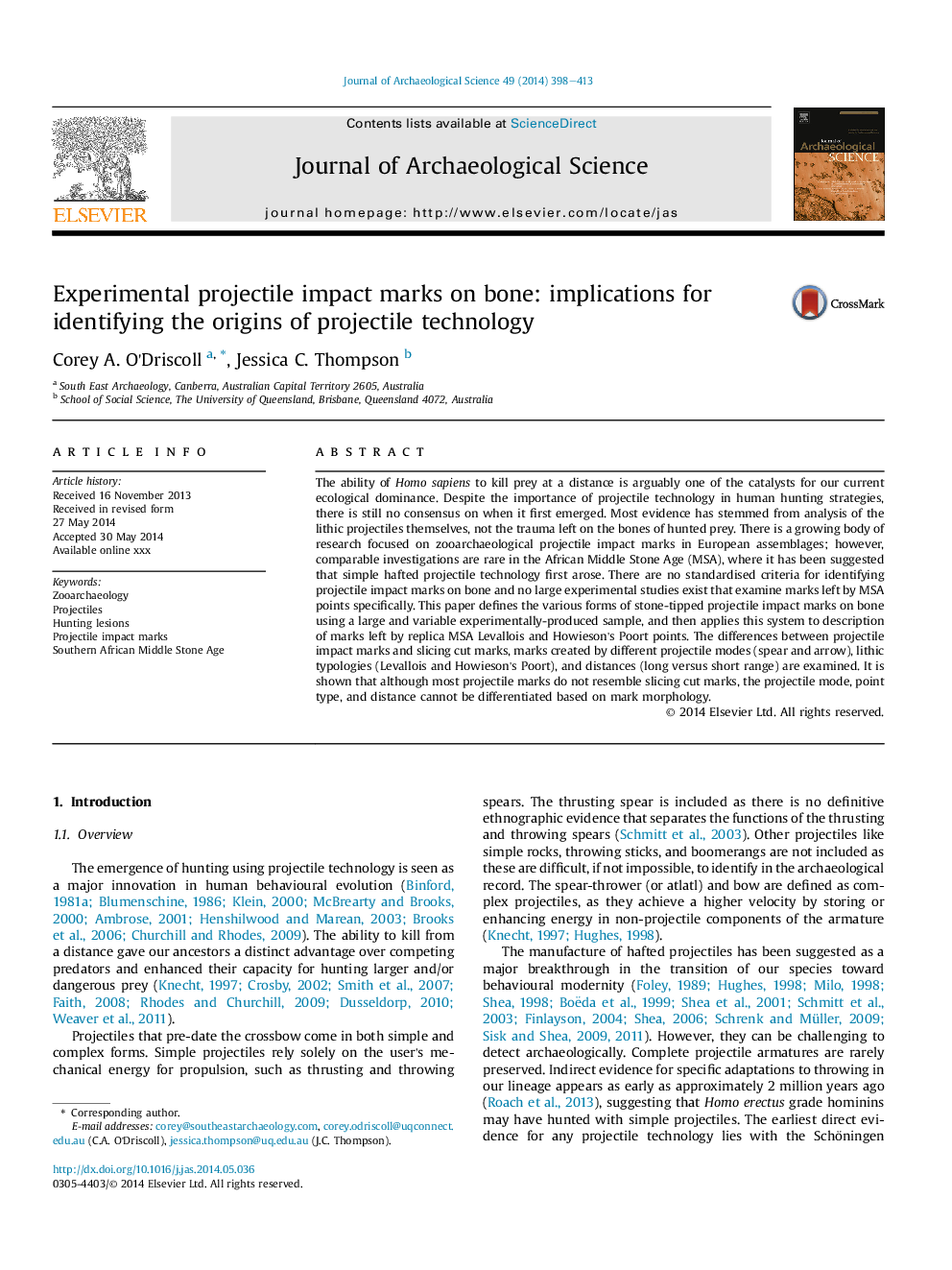| کد مقاله | کد نشریه | سال انتشار | مقاله انگلیسی | نسخه تمام متن |
|---|---|---|---|---|
| 7443079 | 1483911 | 2014 | 16 صفحه PDF | دانلود رایگان |
عنوان انگلیسی مقاله ISI
Experimental projectile impact marks on bone: implications for identifying the origins of projectile technology
ترجمه فارسی عنوان
علائم اثرات پرتابه تجربی بر روی استخوان: مفاهیم برای شناسایی ریشه های تکنولوژی پرتابه
دانلود مقاله + سفارش ترجمه
دانلود مقاله ISI انگلیسی
رایگان برای ایرانیان
کلمات کلیدی
باغ وحش پروجکت ها، ضایعات شکار، علائم ضربه ای پروجکتی، سن قرون وسطی آفریقای جنوبی،
موضوعات مرتبط
مهندسی و علوم پایه
مهندسی مواد
دانش مواد (عمومی)
چکیده انگلیسی
The ability of Homo sapiens to kill prey at a distance is arguably one of the catalysts for our current ecological dominance. Despite the importance of projectile technology in human hunting strategies, there is still no consensus on when it first emerged. Most evidence has stemmed from analysis of the lithic projectiles themselves, not the trauma left on the bones of hunted prey. There is a growing body of research focused on zooarchaeological projectile impact marks in European assemblages; however, comparable investigations are rare in the African Middle Stone Age (MSA), where it has been suggested that simple hafted projectile technology first arose. There are no standardised criteria for identifying projectile impact marks on bone and no large experimental studies exist that examine marks left by MSA points specifically. This paper defines the various forms of stone-tipped projectile impact marks on bone using a large and variable experimentally-produced sample, and then applies this system to description of marks left by replica MSA Levallois and Howieson's Poort points. The differences between projectile impact marks and slicing cut marks, marks created by different projectile modes (spear and arrow), lithic typologies (Levallois and Howieson's Poort), and distances (long versus short range) are examined. It is shown that although most projectile marks do not resemble slicing cut marks, the projectile mode, point type, and distance cannot be differentiated based on mark morphology.
ناشر
Database: Elsevier - ScienceDirect (ساینس دایرکت)
Journal: Journal of Archaeological Science - Volume 49, September 2014, Pages 398-413
Journal: Journal of Archaeological Science - Volume 49, September 2014, Pages 398-413
نویسندگان
Corey A. O'Driscoll, Jessica C. Thompson,
